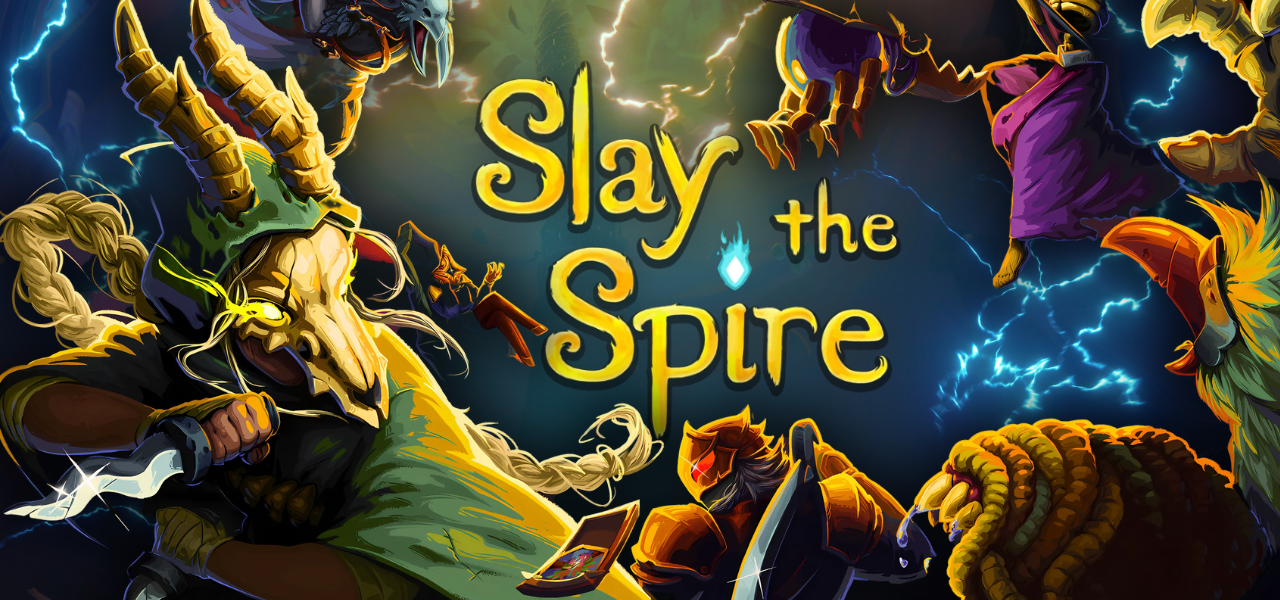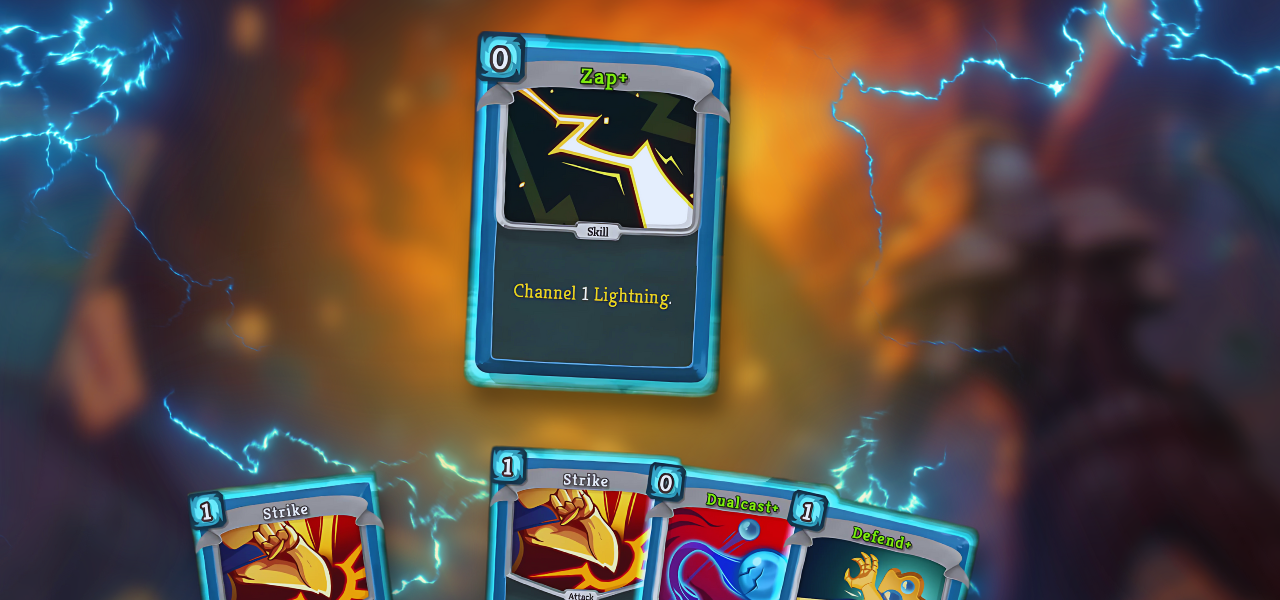Slay the Spire – The Chance to Hear the Spire
Slay the Spire is a unique blend of card game and roguelike, where players build their deck while climbing a procedurally generated tower filled with enemies, events, and treasures. Since its release, the game has become a cult classic in its genre, inspiring the creation of numerous imitators.
Gameplay and Core Mechanics

The player chooses one of the available characters (only one is unlocked at the start), each with a unique set of starting cards, mechanics, and relics. The goal is to complete a series of levels, defeating enemies, collecting cards and relics, and upgrading the deck in order to reach the top of the Tower and defeat the final boss.
Core mechanics include:
- Card-based combat system: In each battle, the player draws cards from their deck and spends a limited energy resource to play them.
- Roguelike structure: Death means restarting the run from scratch, though new cards and relics are unlocked between attempts.
- Deck building: A key feature of the game. Success depends on smart card choices and the synergies between them.
The Tower consists of:
- Regular battles
- Elite enemies — powerful foes that grant rare rewards
- Events — short text-based stories with choices (sometimes risky ones)
- Shops — where you can buy cards, potions, or remove unwanted cards
- Campfires — places to rest (restore health) or upgrade a card
Map Structure
Each act is represented by a branching map, allowing the player to choose their path and determine what encounters lie ahead. This enables strategic planning based on possible rewards and risks.
Combat System
Combat is turn-based. At the start of each turn, the player receives a certain amount of energy and draws cards from their deck. Cards are divided into:
- Attack cards – deal damage to enemies
- Skill cards – provide defense or other effects
- Buffs (Powers) – grant ongoing bonuses for the duration of the fight
The player must use cards and energy efficiently to defeat enemies while minimizing incoming damage.
Deck Building
After each victory, the player can add a new card to their deck. It’s important to choose carefully in order to build an effective deck that can handle a variety of threats.
Characters and Their Traits
- The Ironclad
- Description: A warrior with high survivability and powerful attacks.
- Playstyle: A balanced mix of offense and defense, with the ability to gain Strength to deal increased damage.
- The Silent
- Description: A nimble assassin specializing in poison and rapid attacks.
- Playstyle: Deals damage over time with poison, plays multiple cards per turn, and relies on evasion and daggers.
- The Defect
- Description: An automaton that utilizes orbs for offense and defense.
- Playstyle: Manipulates various types of orbs (Lightning, Frost, Plasma) to unleash powerful combos and gain combat advantages.
- The Watcher
- Description: A monk who uses stances to shift her combat style.
- Playstyle: Switches between stances (Wrath, Calm, Divinity) to boost damage, gain energy, and activate other effects.
Difficulty and Replayability
The game requires thoughtfulness, planning and adaptation:
- You can’t fully control your deck composition — you have to work with what you get.
- With each run, new cards and relics are unlocked, expanding your strategic options.
- There’s an Ascension system — a set of increasing difficulty levels where each subsequent run becomes more challenging.
- Actual replayability is virtually endless: thanks to the variety of cards, relics, random events, and a vast library of mods available through the Steam Workshop, every run feels unique.
Sound Design and Soundtrack
The music ranges from calm melodies on the map to tense compositions during boss battles. Sound effects clearly convey strikes, ability activations, and potion usage. While the sound design is clean and atmospheric, it lacks the brutality one might expect to hear during intense combat.
Accessibility in Slay the Spire

Originally, Slay the Spire had no accessibility features for blind players, but thanks to the game’s flexible modding system, everything changed with the introduction of the Say the Spire mod:
https://bradjrenshaw.github.io/say-the-spire
Key Features of the Say the Spire Mod
- Screen Reader Integration
The mod integrates with screen reading software and adapts controls, allowing full interaction with the game using only audio.
- Screen Reader Support
Say the Spire supports popular screen reading programs such as NVDA, JAWS, Window-Eyes, Supernova, System Access, and ZoomText. If none of these are available, the mod falls back on Microsoft SAPI or copies the text to the clipboard as a backup method.
- Interface Narration
All UI elements — including cards, relics, potions, and events — are narrated, enabling players to navigate the game with ease. The mod also provides spoken information about the map and the player’s current position.
- Adapted Controls
The mod allows full control of the game using a keyboard or gamepad. This simplifies navigation for screen reader users and ensures accessible gameplay.
Compatibility and Installation
- Platforms: Officially supports the Windows and Linux versions of Slay the Spire on Steam.
- Installation: Detailed installation instructions are available in the official documentation.
Conclusion
Slay the Spire – is the gold standard of deckbuilding roguelikes which shows how exciting should be the building process of deck in the gameplay. Its excellent replayability, and refined design make it a must-play for fans of strategy, roguelikes, and card games.
Pros:
- Excellent balance: The game has virtually no “useless” cards — each one can shine when used with the right strategy.
- Easy to learn: Early runs teach the mechanics naturally through gameplay, without overwhelming players with tutorials.
- Mod support: A wide variety of user-made mods are available on PC, expanding the content significantly.
Cons:
- Limited variety at first: The early hours may feel repetitive until new cards and characters are unlocked.
- RNG factor: Sometimes defeats may feel unfair due to unlucky card or relic drops.
The introduction of an accessibility mod has allowed blind players to experience this masterpiece — a game that has spawned numerous imitators, some more successful than others, such as Dawncaster for mobile devices. It’s only fitting to extend heartfelt thanks to the dedicated members of the modding community who care deeply about accessibility in video games for blind gamers.
The release of Say the Spire marks a major step forward in game accessibility, and there’s hope that the upcoming sequel in the series will also include built-in accessibility features. Until then, the Spire awaits its heroes.
